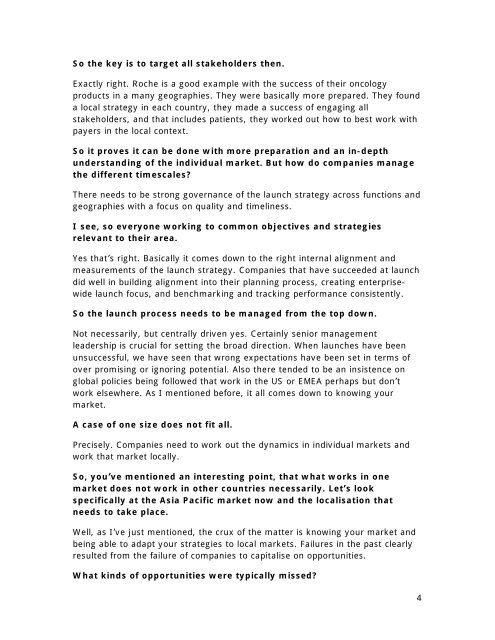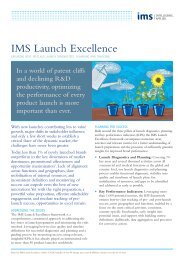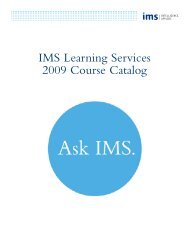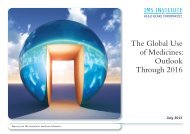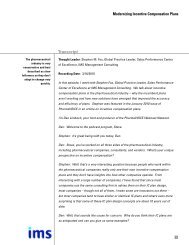Achieving Launch Excellence in Asia-Pacific Transcript ... - IMS Health
Achieving Launch Excellence in Asia-Pacific Transcript ... - IMS Health
Achieving Launch Excellence in Asia-Pacific Transcript ... - IMS Health
You also want an ePaper? Increase the reach of your titles
YUMPU automatically turns print PDFs into web optimized ePapers that Google loves.
So the key is to target all stakeholders then.<br />
Exactly right. Roche is a good example with the success of their oncology<br />
products <strong>in</strong> a many geographies. They were basically more prepared. They found<br />
a local strategy <strong>in</strong> each country, they made a success of engag<strong>in</strong>g all<br />
stakeholders, and that <strong>in</strong>cludes patients, they worked out how to best work with<br />
payers <strong>in</strong> the local context.<br />
So it proves it can be done with more preparation and an <strong>in</strong>-depth<br />
understand<strong>in</strong>g of the <strong>in</strong>dividual market. But how do companies manage<br />
the different timescales?<br />
There needs to be strong governance of the launch strategy across functions and<br />
geographies with a focus on quality and timel<strong>in</strong>ess.<br />
I see, so everyone work<strong>in</strong>g to common objectives and strategies<br />
relevant to their area.<br />
Yes that’s right. Basically it comes down to the right <strong>in</strong>ternal alignment and<br />
measurements of the launch strategy. Companies that have succeeded at launch<br />
did well <strong>in</strong> build<strong>in</strong>g alignment <strong>in</strong>to their plann<strong>in</strong>g process, creat<strong>in</strong>g enterprisewide<br />
launch focus, and benchmark<strong>in</strong>g and track<strong>in</strong>g performance consistently.<br />
So the launch process needs to be managed from the top down.<br />
Not necessarily, but centrally driven yes. Certa<strong>in</strong>ly senior management<br />
leadership is crucial for sett<strong>in</strong>g the broad direction. When launches have been<br />
unsuccessful, we have seen that wrong expectations have been set <strong>in</strong> terms of<br />
over promis<strong>in</strong>g or ignor<strong>in</strong>g potential. Also there tended to be an <strong>in</strong>sistence on<br />
global policies be<strong>in</strong>g followed that work <strong>in</strong> the US or EMEA perhaps but don’t<br />
work elsewhere. As I mentioned before, it all comes down to know<strong>in</strong>g your<br />
market.<br />
A case of one size does not fit all.<br />
Precisely. Companies need to work out the dynamics <strong>in</strong> <strong>in</strong>dividual markets and<br />
work that market locally.<br />
So, you’ve mentioned an <strong>in</strong>terest<strong>in</strong>g po<strong>in</strong>t, that what works <strong>in</strong> one<br />
market does not work <strong>in</strong> other countries necessarily. Let’s look<br />
specifically at the <strong>Asia</strong> <strong>Pacific</strong> market now and the localisation that<br />
needs to take place.<br />
Well, as I’ve just mentioned, the crux of the matter is know<strong>in</strong>g your market and<br />
be<strong>in</strong>g able to adapt your strategies to local markets. Failures <strong>in</strong> the past clearly<br />
resulted from the failure of companies to capitalise on opportunities.<br />
What k<strong>in</strong>ds of opportunities were typically missed?<br />
4


